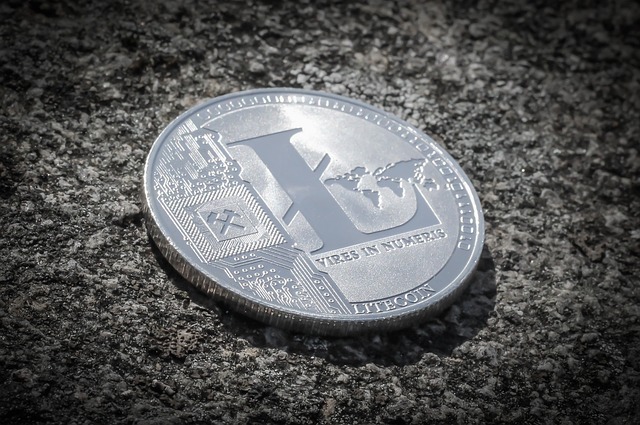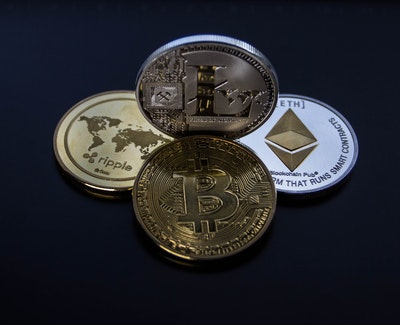A Guide to Understanding Litecoin

If you’ve been around the cryptocurrency industry, you might have heard the name of a popular cryptocurrency-Litecoin (LTC). Litecoin was one of the first cryptocurrencies created after Bitcoin to overcome BTC’s shortcomings.
It handles your everyday transactions with high speed and low transaction costs. If you’re interested in buying Litecoin, here is a guide to everything you need to know:
What is Litecoin?
Litecoin, created by an ex-employee of Google named Charlie Lee, is an electronic peer-to-peer cryptocurrency.
It is also known as Digital Silver in the cryptocurrency community and is based on Bitcoin’s source code. The primary reason for its creation was to improve Bitcoin’s functioning system by having faster transactions.
There are 150 pre-mined coins and a maximum supply of 84 million Litecoin coins. The blockchain cryptocurrency creates a new block every 2.5 minutes, so its collection reduces slowly over time, which preserves the coins’ value.
How to Use Litecoin
Litecoin is very liquid, and you can also make payments using it through digital currency apps like Cryptopay. For P2P (peer-to-peer) with LTC, you can use platforms like Binance.
Online converters will easily convert LTC to USD. Then select a cryptocurrency exchange or trading platform that supports Litecoin and deposit your Litecoin on it.
Place a sell order for your desired amount of Litecoin to cover it in USD at the current market rate. After you sell your order, your USD is deposited in the bank account you linked, which you can withdraw as cash.
What Is Litecoin’s Hashing Algorithm?
A hashing algorithm is a mathematical function that takes in data and makes it unreadable, so it can’t be decoded or readable, securing and authenticating the data. Litecoin uses the Scrypt hashing algorithm.
Scrypt is a simple algorithm that gives faster transaction speeds than the Bitcoin hashing algorithm. Its processing speed is 54 transactions per second compared to Bitcoin, whose speed is 5.
It takes around an hour for Bitcoin to go through all the six confirmations required for Bitcoin. Litecoin also commonly requires six confirmations from exchanges to be considered irreversible, and the P2P Litecoin transactions happen almost immediately.
This speed made it easier for merchants to settle payments and conduct business faster.
How Litecoin Works
Litecoin is an open-source project that uses a proof-of-work consensus mechanism to verify the transaction. This consensus chooses if a miner is allowed to verify new data. When miners verify data, they are given cryptocurrency.
Litecoin is mined by miners solving math problems, which are called hashes. When you solve a hash, you record a new transaction on the blockchain.
Once the block is closed, you cannot alter the blockchain. Mining operations require a lot of computing power that needs space and high energy, so it’s usually performed by mining farms or professional crypto miners who use high-quality hardware.
How Litecoin Halves
Litecoin halves just like Bitcoin, helping control its supply. Halving is the reduction of reward when a new transaction is made by a miner, thus creating a new block.
Halving lessens the amount of Litecoins you’re awarded by one-half. Its purpose is to reduce the creation rate of new Litecoins, ensuring it maintains its value and that oversupply does not devalue the coin.
The reward you received for a new blockchain was 50 LTC when Litecoin was created, while in 2023, it is 6.25 LTC.
Litecoin vs. Bitcoin and Ethereum
Bitcoin and Ethereum are the other most popular cryptocurrencies and Litecoin’s competitors. Bitcoin is the most popular cryptocurrency and is for you if you’re interested in store value.
Due to its limited supply, it acts as a hedge against traditional financial systems. It is also a safer investment option due to its high adoption, making it easy to use more often.
If you’re on a budget, Litecoin is better than Bitcoin to invest in since it is cheaper and has lower transaction rates. Litecoin is also better for you if you perform multiple transactions on a daily basis since it has a faster transaction speed than Bitcoin.
Ethereum is a cryptocurrency and a blockchain platform that allows developers to develop decentralized apps called Apps.
Ethereum cryptocurrency called Ether is used for transactions in the Ethereum apps and to power it. If you’re interested in managing Dapps and smart contracts, then Ether is a better option for you to invest in than Litecoin.
However, Ethereum requires gas fees for every transaction on the Ethereum blockchain, making its transactions more expensive than Litecoin. Ethereum is also not limited like Bitcoin, even though it has a 4.5% limit on its growth rate to preserve its value, affecting its long-term value.
Litecoin’s Advantages and Disadvantages
Litecoin’s most significant advantage is its transaction speed. Additionally, it has a transaction fee of 0.06%, which is lower than Bitcoin, which is 3.92% making its transactions cheaper. It also has 63 million more coins available than Bitcoin.
The currency also has a dedicated team that is always working on improving Litecoin through continuous updates, some of which even got used on Bitcoin Networks like Lightning Network and SegWit.
While its transaction speed was its most significant advantage nowadays, many new cryptocurrencies have faster TPS (Transaction per second) speeds, like EOS at 4000 TPS. Before you invest, research properly and consider consulting with a financial advisor.
Endnote
Litecoin is a peer-to-peer cryptocurrency with higher transaction speeds and lower costs than Bitcoin. It is highly liquid, highly secure, and can be traded easily due to many businesses’ support.
All in all, this coin is an excellent investment if you’re a beginner to cryptocurrency investment or have experience, but want something with staying value and flexibility in your portfolio.






![Looking At Bitcoin As An Investment [Is It Worth The Risk]](https://stumbleforward.com/wp-content/uploads/2018/01/Bitcoin_22.png)